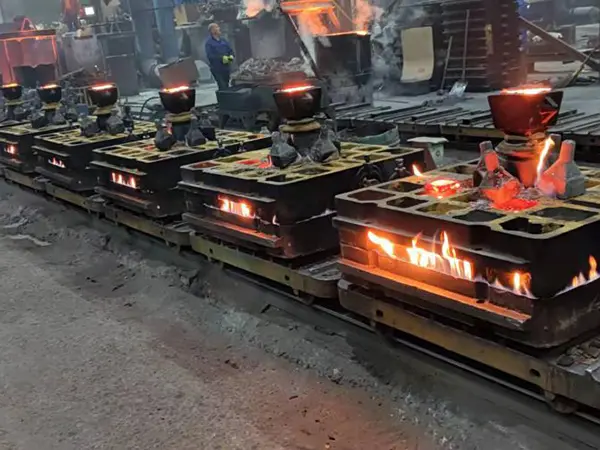3D Printing Patterns for Sand Casting Revolutionizing Traditional Manufacturing
In the realm of manufacturing, traditional methods have long been the backbone for producing intricate components in various industries, particularly in metal casting. Among these traditional techniques, sand casting stands out due to its affordability and versatility. However, the evolution of 3D printing technology is reshaping how patterns are created for sand casting, leading to improved efficiency, reduced costs, and enhanced design capabilities.
Understanding Sand Casting
Sand casting is one of the oldest methods of metal fabrication, where a mold is created by packing sand around a model (the pattern), which is then removed, leaving a cavity for pouring molten metal. The mold can be reused, making this process both economical and flexible for low-to-medium production runs. Traditionally, creating patterns for sand casting involved time-consuming processes, often requiring skilled artisans to carve models from hard materials like wood or metal. This labor-intensive method could lead to longer lead times, increased costs, and sometimes inconsistencies in the final product.
The Emergence of 3D Printing
The introduction of 3D printing into the manufacturing landscape has opened up a new era for creating patterns in sand casting. This additive manufacturing technology allows for the rapid production of complex designs directly from digital models. With advancements in materials and printing techniques, 3D-printed patterns can be made from heat-resistant plastics and even sand-like materials that can withstand the casting process.
Benefits of 3D Printing Patterns
1. Speed and Efficiency One of the most significant advantages of 3D printing is the reduction in lead time. Patterns that once took weeks to produce can now be created in a matter of days or even hours. This acceleration in the production process allows manufacturers to respond quickly to market demands and reduces time-to-market for new products.
3d printing patterns for sand casting

2. Complex Geometries 3D printing facilitates the creation of intricate designs that would be nearly impossible or too costly to achieve with traditional methods. Features such as hollow cores, intricate lattice structures, and undercuts can be incorporated directly into the pattern design. This capability not only enhances the design flexibility but also contributes to weight savings and material optimization in the final cast components.
3. Cost Reduction By eliminating the need for expensive tooling and reducing labor costs associated with traditional pattern-making, 3D printing can lead to substantial cost savings. Furthermore, manufacturers can produce smaller production runs economically, making it an ideal solution for prototyping or custom parts.
4. Customization Customization is becoming increasingly important in today’s manufacturing environment. 3D printing allows for rapid alterations to patterns based on customer feedback or design changes. This adaptability ensures that manufacturers can cater to specific client needs without undergoing extensive retooling processes.
5. Sustainability As industries move towards more sustainable practices, 3D printing offers an environmentally friendly alternative. It reduces waste generated from traditional machining processes and eliminates the need for harmful adhesives and coatings often used in conventional mold-making.
Challenges and Considerations
Despite the numerous advantages, the transition to 3D printing patterns for sand casting does not come without challenges. Ensuring the mechanical properties of the 3D-printed patterns are sufficient for the casting process is critical. Additionally, the cost of high-quality 3D printers and materials may pose a barrier for some smaller manufacturers. It's also essential to train personnel in new technologies, which can entail a learning curve.
Conclusion
The integration of 3D printing technology with sand casting represents a paradigm shift in the manufacturing sector. By leveraging the capabilities of additive manufacturing, foundries can produce more complex and customized parts more quickly and cost-effectively than ever before. As technology continues to advance, it is likely that the synergy between 3D printing and sand casting will only strengthen, fundamentally transforming how we think about and execute manufacturing processes. Embracing this innovation can lead to enhanced competitiveness and ensures that businesses remain at the forefront of the ever-evolving industrial landscape.
Post time:Ara . 10, 2024 13:53
Next:Exploring the Benefits and Applications of Foundry Sands in Modern Manufacturing
